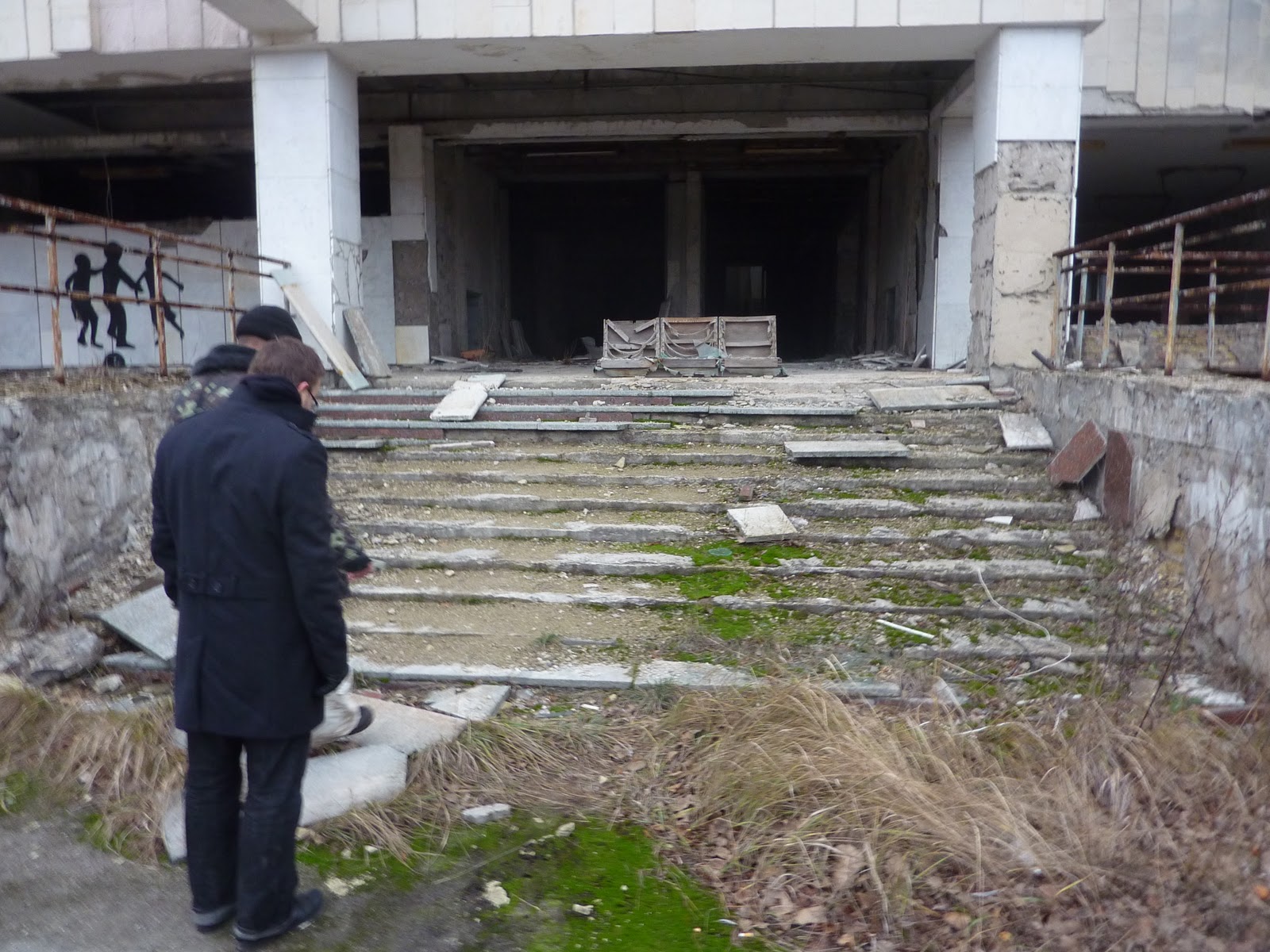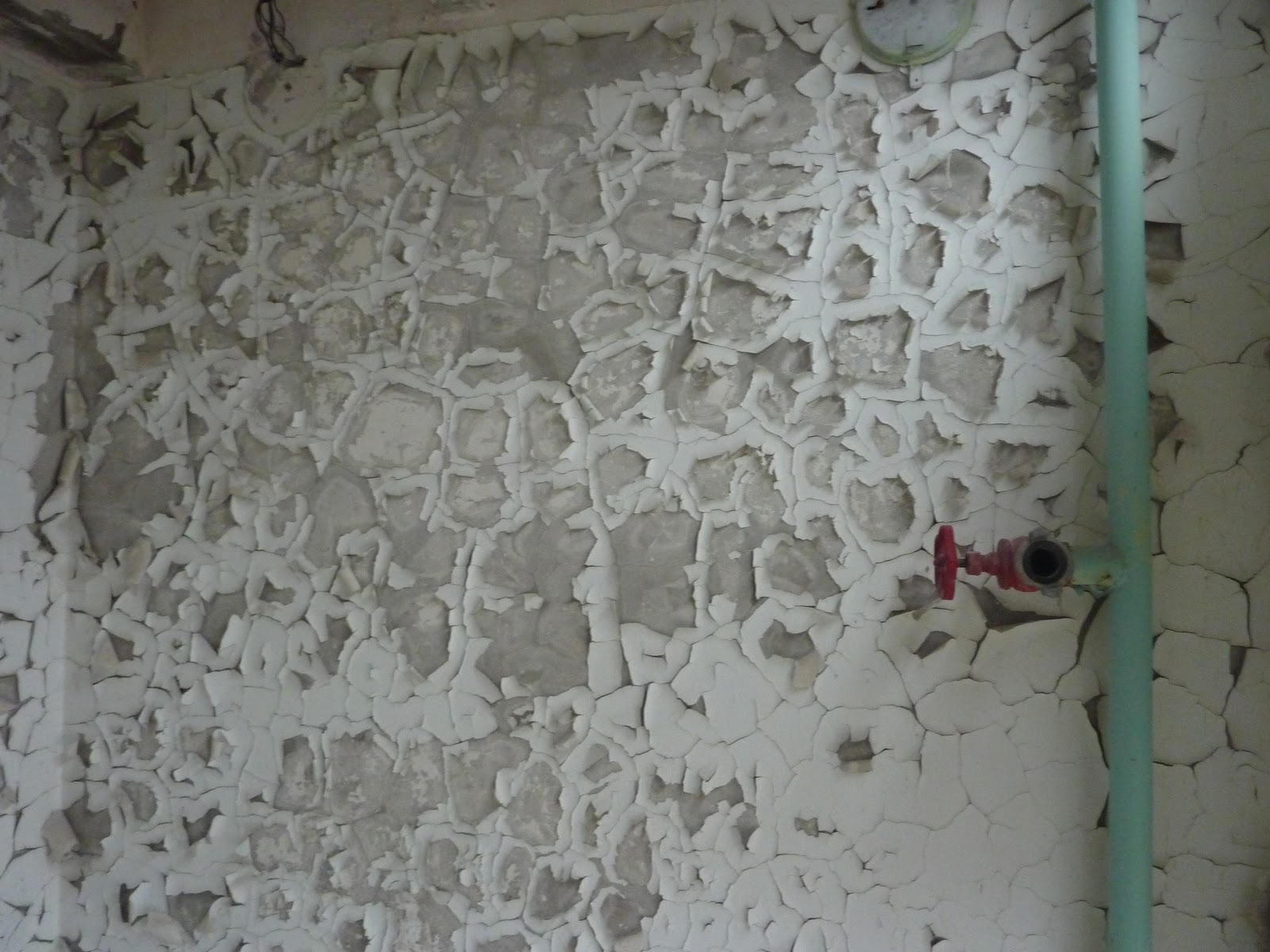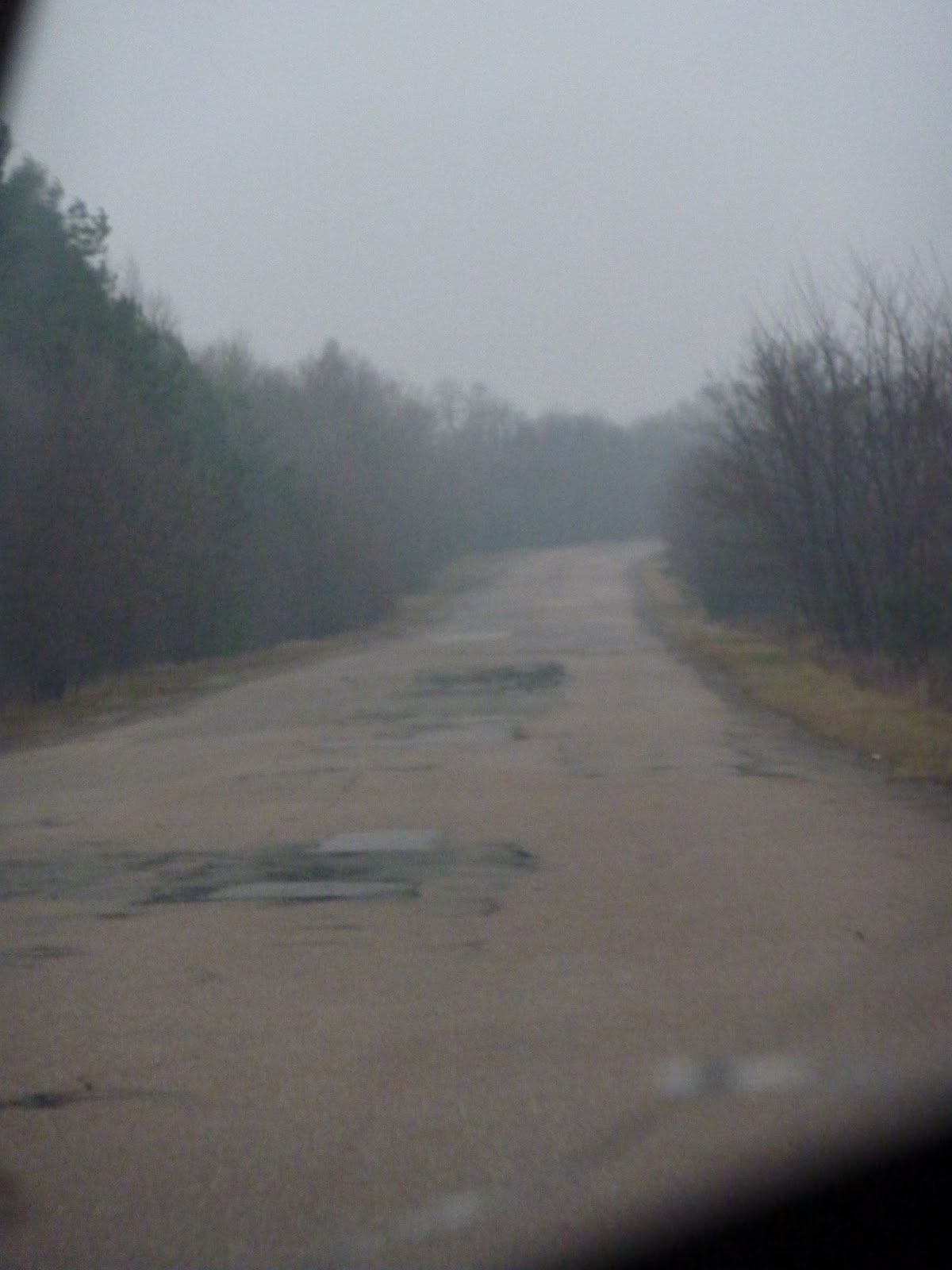To skip back to Part 1 please follow this link:
We stopped at what I think was an old hotel (correct me if I am wrong), one of the tallest buildings in Pripyat, where we would get good views over the city. We entered the lobby being careful to avoid the irradiated moss...
Again the guide left us to go upstairs alone. We climbed the stairways, peering inside to see decimated apartment corridors.
The top floor has seen better days.
A tree growing on the top floor! Life finds a way!
We look out over the dead city.
Buildings in Pripyat are failing structurally due to the elements and growth like this. One building has already collapsed - in 60 years who knows what'll be left standing? I understand that since this visit 4 years ago, the regulations have tightened and there are many buildings that visitors are not allowed inside due to safety reasons. I don't know if you can still come up here and see this tree. If you know, I'd be interested to hear about it!
This scene will be familiar to gamers. Nature is taking over Pripyat. I'd like to return in twenty years to see how this view has changed, I expect much of the city to be covered in light woodland by then and more buildings to have collapsed.
There's the ferris wheel on the right.
Looking down on the buildings, it's grim to think that every room is a desolate wreck.
There is the odd bit of street art around the city, like this one.
Could be a long wait for the elevator....
...A very long wait!
Inside an apartment. I didn't go further because of the carpeted floor. Our guide warned us that carpet absorbs lots of radiation. In the period after the evacuation, looters took most of the carpets from the city, not realising they were probably the most irradiated objects of all!
Our time up and our bellies rumbling we drove out of Pripyat, passing the checkpoint where the guard was chopping firewood so he could stay cosy!
Pripyat's sign on the main road. 1970.
The "Red Forest". So called because the trees took on a red tint from the radiation in the soil.
The guide told the driver to slow down near the forest and he brought out the geiger counter. It started off at normal levels...
0.737...
1.144 and rising! A radiation hot spot. The numbers went up and up as we rolled forwards, and then suddenly dropped back to normal. Probably not a good spot for a picnic...
As we near Chernobyl town, the guide points into the trees to completely overgrown houses.
Next stop: the ship graveyard. These boats are irradiated and were used in the disaster clean-up. Now they've been left to slowly rust and die.
We were driven to a nearby village in the zone to see some vehicles used in the clean-up operation, rescued from the vehicle graveyard you saw in the photos from the visitor office.
There's a tree growing in the cab of this truck!
To show us how radioactive these vehicles still are, the guide put the Geiger counter under the lip of the wheel arch. The readings went crazy, hundreds of times higher than the background radiation here.
This odd-looking vehicle was used to clear irradiated soil underwater.
We drove back to Chernobyl town - this Soviet statue is outside.
Chernobyl's local bar and restaurant where the exclusion zone workers can hang out.
Before lunch we have to use this radiation measuring machine to check we haven't picked up any dangerous levels of radiation. You stand on the footpads and put your hands in this device.
You wait to see if this light turns green. If it does - you're ok. If it turns red, you're in trouble - you are irradiated! Apparently only one visitor in the history of tours to Chernobyl has ever failed a radiation test - a Dutch photographer who spent too long wandering around in the woods. Although we were confident we hadn't done anything stupid to pick up extra radiation, it was still a relief to see the light go to green! Sorry folks, no extra heads or anything for me.
We were served a classic Ukranian lunch, a huge four course meal - with food imported from outside the zone of course! Our guide told us that drinking beer or wine would be a good idea in the evening as it helps to lower your radiation level. Orders to get drunk? Yes Sir!
We thanked our guide and were driven out of the exclusion zone down those lonely roads. At the last checkpoint the guards passed Geiger counters all over our car, including underneath it, to check for any radiation absorbtion. We had to enter a room and use these gateways (you can see a brighter picture of one below). You stand on it, put your palms on the sensors and it checks your rad level. If you're not irradiated, the gate opens and you can leave Chernobyl. If you are irradiated, the gate doesn't open and you're stuck in the exclusion zone!
Some old people still live in the exclusion zone - who refused to leave when the evacuation order came after the accident. Normally on this tour we would have got to meet them but because it was winter the visits were off. Their families can visit these zone residents and they even grow their own food (which of course is irradiated!). Some Chernobyl tours take you to scientific buildings where you can meet scientists who study the effects of radiation in the exclusion zone.
We arrived safely back in Kiev. It had been a long but very unique and interesting day. The following day we visited the Chernobyl Museum in Kiev - which we had wanted to do before going on the tour but didn't have time.
This diorama in the museum showed the state of the reactor after the disaster. If you compare it to my earlier photos you can see they have now built the shield over the hole. At the bottom of the diorama is the area we were standing in yesterday where the monument was.
The museum does a great job of examining the disaster, the clean-up and the people involved. It displays many personal effects of people who died helping to contain the radiation on the day of the accident, and people who died as a result of radiation in the clean-up. Above are the possessions of a man who was in the reactor on the day of the explosion who helped to contain the leak. He died only a few days later from severe radiation poisoning.
The museum really brought home the human tragedy of Chernobyl and how many lives were affected by it. Even today thousands of people are affected by the radiation in nearby areas, particularly in Belarus where families living in irradiated areas (far outside the exclusion zones) are afflicted by cancers and other illnesses. I would really recommend visiting this museum before going to Chernobyl as it provides the back-story, a context for the events, and the important human element which you don't really get just by visiting the exclusion zone.
Here in the museum is another of the gates like the ones we had to pass through to get out of Chernobyl.
So ended a unique trip. I've continued to research Chernobyl and the places we saw, the net is full of information for those interested. I've added some links at the end for you to find out more about it. It is a weird and slightly unsettling place, straight out of an apocalypse scenario. It makes you appreciate what we take for granted and the power that radiation has. I think it is important to learn about what happened there, the human impact it had and the lessons we can take from the event. Some people visit Chernobyl seeing it as an exciting and adventurous tourist attraction, without really thinking about those who died from the accident - and those who are still suffering from the aftermath. It is a chilling reminder of the dangers of nuclear power and sobering to realise that much of the European and Russian continent was close to being covered by radiation. It was only prevented by the brave Ukrainian forces in those critical few days after the explosion - who in many cases sacrificed their lives to save thousands or millions more.
I found our visit to be both a fascinating and grim experience. I'd would really like to return one day, with a better camera and more time. During a short tour like ours you have such a limited time at each location that you just have to snap fast and move on. I would also like to return in a few decades and see how the zone has evolved and what remains of Pripyat.
There are a number of charities which help people still being affected by the Chernobyl disaster, such as schemes which take children from irradiated areas on holiday to experience radiation-free living and boost their health. In places like south Belarus, the people are poor and have no choice but to live in irradiated areas. If you want to help, these charities are a good place to start.
I hope you found this interesting. If you have been to Chernobyl I would love to hear about your trip - drop me a mail or leave a comment. Thanks for reading!
Learn more about Chernobyl
Below are some interesting documentaries and articles about Chernobyl and disaster day.
- Wikipedia has many good articles about Chernobyl:
http://en.wikipedia.org/wiki/List_of_Chernobyl-related_articles
- A very good documentary with interviews and footage of the clean-up:
http://www.youtube.com/watch?v=bSRC1_OZPIg...feature=channel
- Pripyat website, with photos of how it used to look and tales from former residents:
http://pripyat.com/en/
- Film footage:
http://www.youtube.com/watch?v=nbCcutzXzYg
- Video diary from a charity worker in Belarus working at orphanages:
http://www.youtube.com/watch?v=qgAgYWOMjyU&feature=channel
- Old videos of Pripyat:
http://www.youtube.com/user/pripyatchanka
- Old photos of Pripyat and more:
http://www.chornobyl.in.ua/en/
- BBC Info site on Chernobyl
http://news.bbc.co.uk/2/shared/spl/hi/guides/456900/456957/html/nn1page1.stm
The BBC has a lot of good recent news about Chernobyl too - there is a list here:
http://www.bbc.co.uk/search/?q=chernobyl
And finally you can see my photos from Kiev from our visit here:
Part 1 - http://www.facebook.com/album.php?aid=185779&id=662950929&l=76b43fde16
Part 2 - http://www.facebook.com/album.php?aid=192647&id=662950929&l=9689f8e06e
Alan Stock
Blog created January 2010, rewritten August 2014


































































